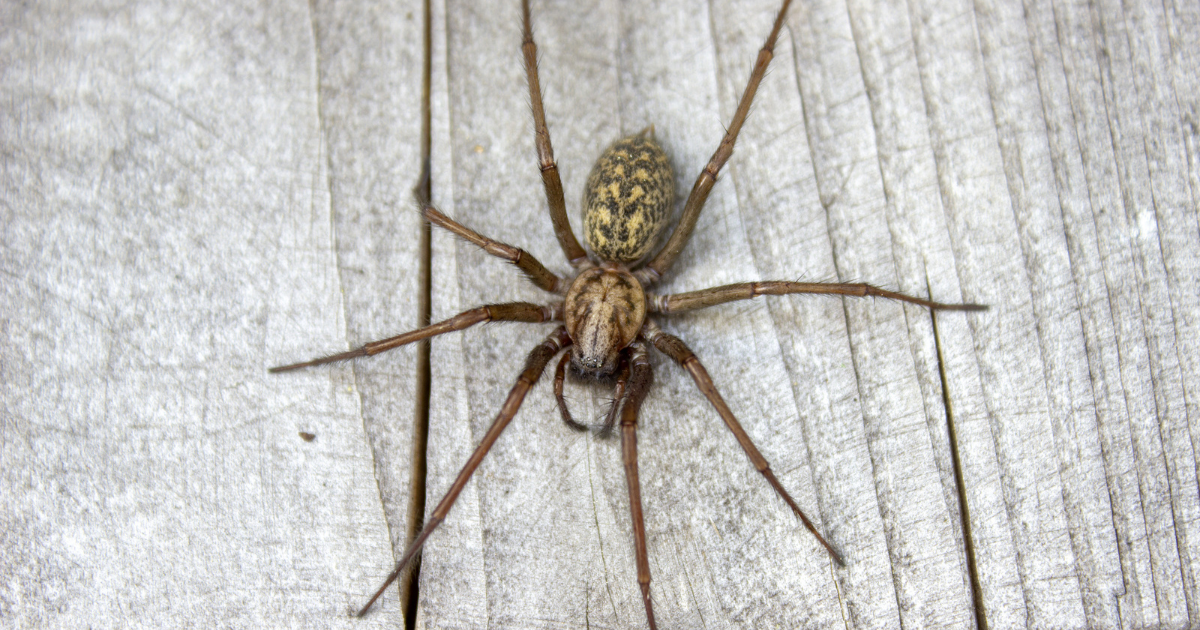Are Giant House Spiders Harmless?
Giant house spiders may feel threatened and defend themselves, which could result in a spider bite. In rare cases, an allergy exists and the reaction should be taken seriously. But, for most people, yes, the giant house spiders are quite harmless.
Are Giant House Spiders Friendly?
We aren’t going to go so far as to call them friendly. But they are certainly helpful to humans. They hunt other pests like ants, roaches, earwigs, which helps to keep your house free from invaders.
We don’t recommend trying to hold them in your hand or petting them with your fingertips. They could easily interpret such a gesture as a threat and proceed to bite you.
Are Giant House Spiders the Same as Hobo Spiders?
The hobo spider is also called “Tegenaria Agrestis,” or “aggressive house spider.” They look very similar in appearance to the giant house spider but they are a bit smaller.
Hobo spiders were once believed to be aggressive because they sometimes appear to run towards humans, charging at them as if they were attacking them. But we now know that they have very poor vision. They are actually trying to run away from you, but since they can’t see, they accidentally run straight at you.
Are Giant House Spiders the Same as Wolf Spiders?
No. Wolf spiders prefer much warmer, drier climates. Wolf spiders are also gray and prefer the outdoors. Following the mass migration of inhabitants from California to Washington State in the 1980s, many new residents to the Pacific Northwest were alerted to a new aspect of life: massive spiders running across the floor of their house at night.
To the Californians, there was a word for a large hairy spider: A wolf spider. So, they applied their limited knowledge to this new large hairy spider and word spread that these were in fact wolf spiders. They are not.
Are Giant House Spiders the Same as Brown Recluse Spiders?
No. Brown recluse spiders are native to Alabama and the South. Just as was the case with Californians calling them wolf spiders, Southerners were accustomed to calling large hairy spiders “brown recluse.”
Brown recluse spiders are a closer match to giant house spiders than wolf spiders are, due to their similarity in color and preference for dark corners. But a brown recluse can easily be identified by its very familiar markings of a “violin” shape on the top of its head. That is why the brown recluse is also called a “fiddleback spider.”
Are Giant House Spiders the Same as Aggressive House Spiders?
No. Again, The “Tegenaria Agrestis” or “aggressive house spider” is commonly known as a hobo spider. They look very similar in appearance to the giant house spider but they are a bit smaller.
Are Giant House Spiders Dangerous?
No. But there’s always a chance that it’s actually a hobo spider, not a giant house spider. Hobo spiders are very dangerous and so you should keep your distance from both of them.
If you see an unacceptable number of them in your home, an infestation might exist, in which case you can take measures to mitigate them. A simple cleanup of areas where the spiders make their habitats could be all you need to do.
If you feel like professional help is needed, we are well trained and able to rid your house of unwanted pests like spiders, ants, rodents, or wasps. Call Classic Pest Control toll free at (425) 259-0008 or click here to use our convenient online form to request a free estimate.
Have more questions regarding Pest Control? Check out our Frequently Asked Questions Page.

